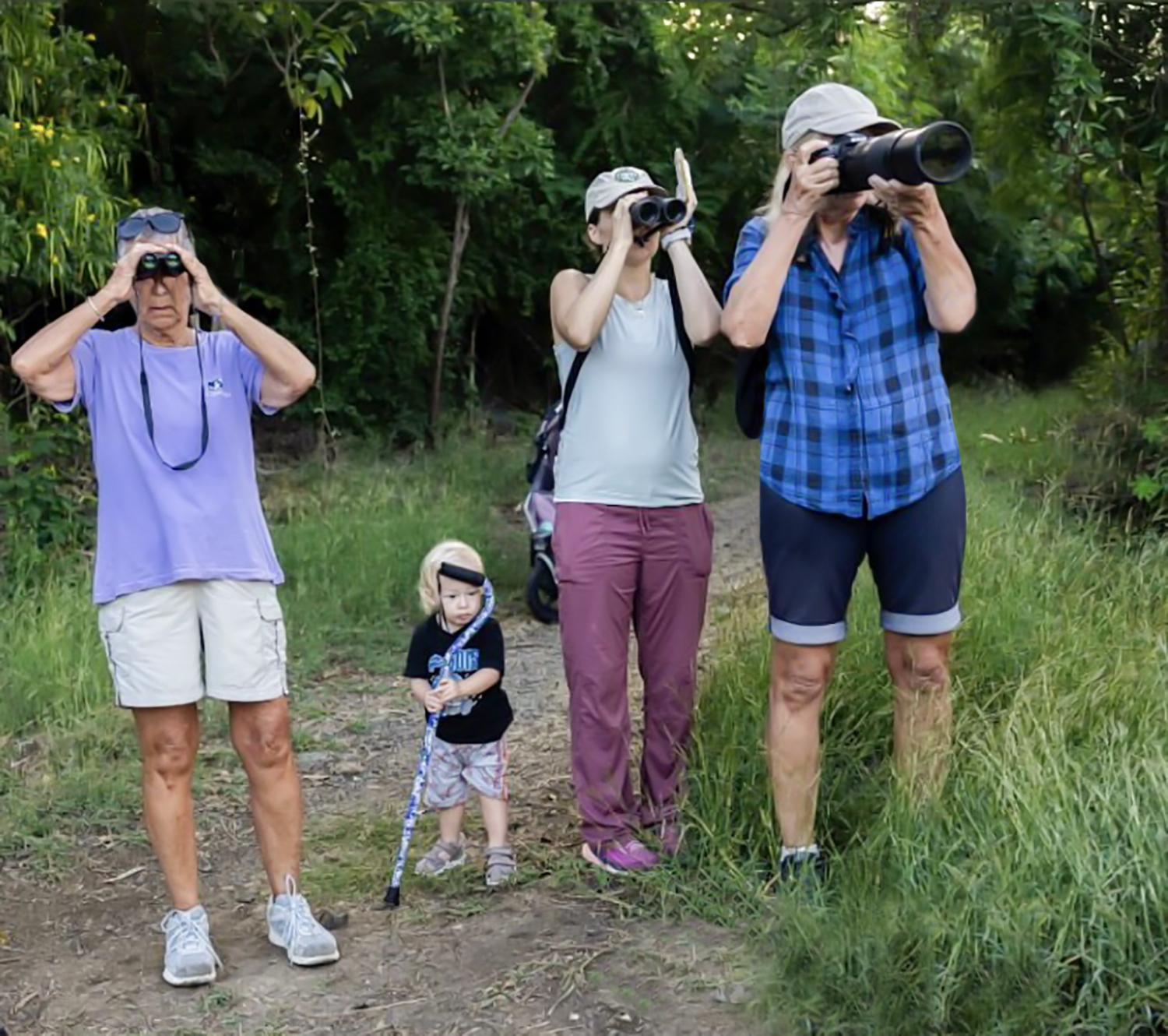
The annual December bird count on St. John is one of my favorite activities. It is sponsored by the Virgin Islands Audubon Society and represents our local contribution to a widespread ‘citizen science’ bird census that was started by the National Audubon Society in 1900. The reports we file on our bird sightings are put together with others from across the Western Hemisphere and the results are used to support a variety of research and conservation activities.
The bird count on St. John brings together a loose group of bird lovers, some of whom snoop around in hidden ponds, or scan offshore islands by boat. Others stay closer to home and report on bird sightings in various neighborhoods around the island. The information helps us get a sense of how well the different birds are doing. (I was first invited to join a bird count walk 25 years ago by my neighbor Beverly Biziewski, who recently passed away, and will be greatly missed.)
Laurel Brannick, who was a National Park Ranger on St. John for 30 years, has been leading the count team, and tries to get people organized to cover as much territory as possible, including some of the offshore cays. There were 44 counters this time, compared to 33 last year. Some people walked out alone or looked from home, while others paired up, or went around in a small group.
The count team reported 66 different types of birds. The species with the highest number was the Gray Kingbird again (244 total, compared to 236 the year before). Several of us showed up at the dock in Coral Bay at daybreak near where many of the Gray Kingbirds roost for the night. When the sun came up, we counted the birds as they flew up and went off to search for breakfast.
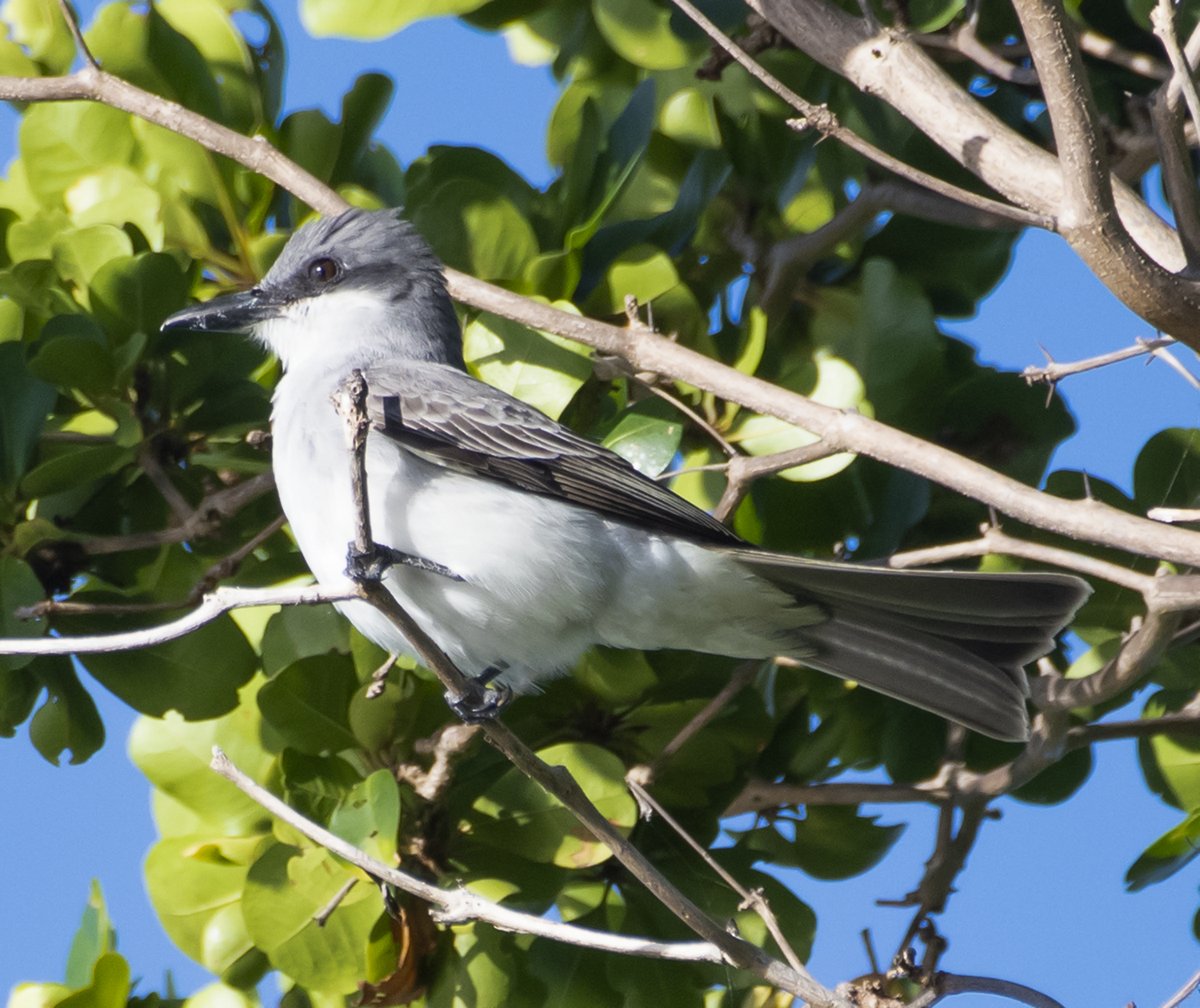
Gray Kingbirds can be seen all around St. John. Also Bananaquits, which had the second highest number counted (167), though this was relatively low compared to the past couple of years, probably due to the rainy weather. The pesky, fruit-stealing Pearly-eyed Thrashers (122) are also widespread. Whether you realize it or not, these birds often share your space and provide a background of natural sounds you can hear during the day.
Some common birds perch on treetops, or the power lines outside your house, including Scaly-naped Pigeons (who, hoo, hoo, hooooo), White-winged Doves (who cooks for you), and Zenaida Doves (who are you you you). The forest-dwelling Bridled Quail-Doves (who-whooo) are much more reclusive.
Brown-throated Parakeets (also known as St. Thomas Conures) came to St. John with the 2017 hurricanes and have now spread out around the island. Though there aren’t all that many, they call attention to themselves by chattering very loudly wherever they go.
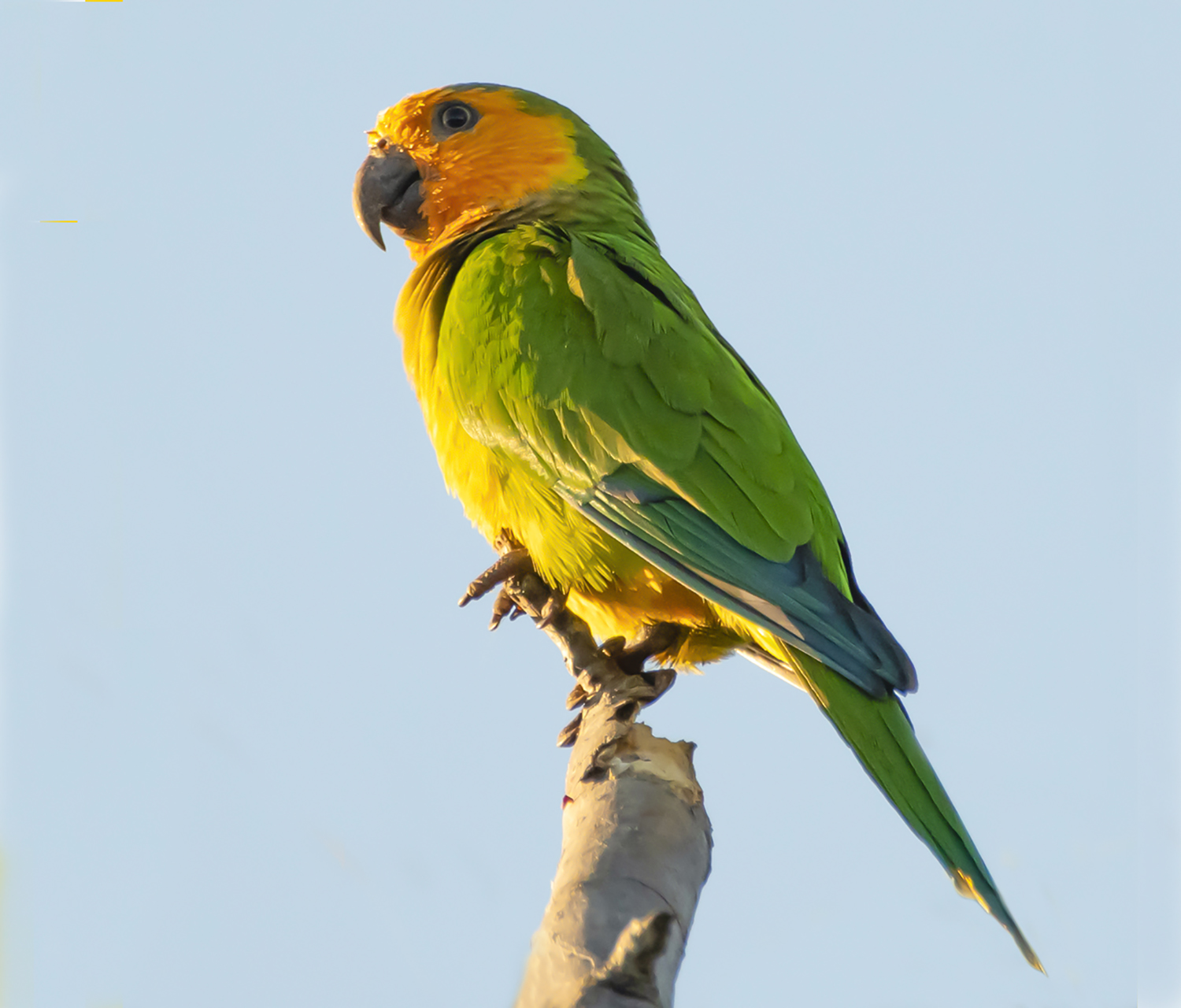
Hummingbirds are precious companions found around many homes, but they are pretty quiet except for the whirr of their wings as they hover. The Green-throated Caribs are more numerous now (48) after recovering from the effects of the hurricanes of 2017. However the Antillean Crested hummingbirds are still relatively scarce (only 8 reported, the same as last year).
Certain birds, like the native White-cheeked Pintail Ducks (116), are quite numerous but only visible if you go out and look into the ponds and wetlands.
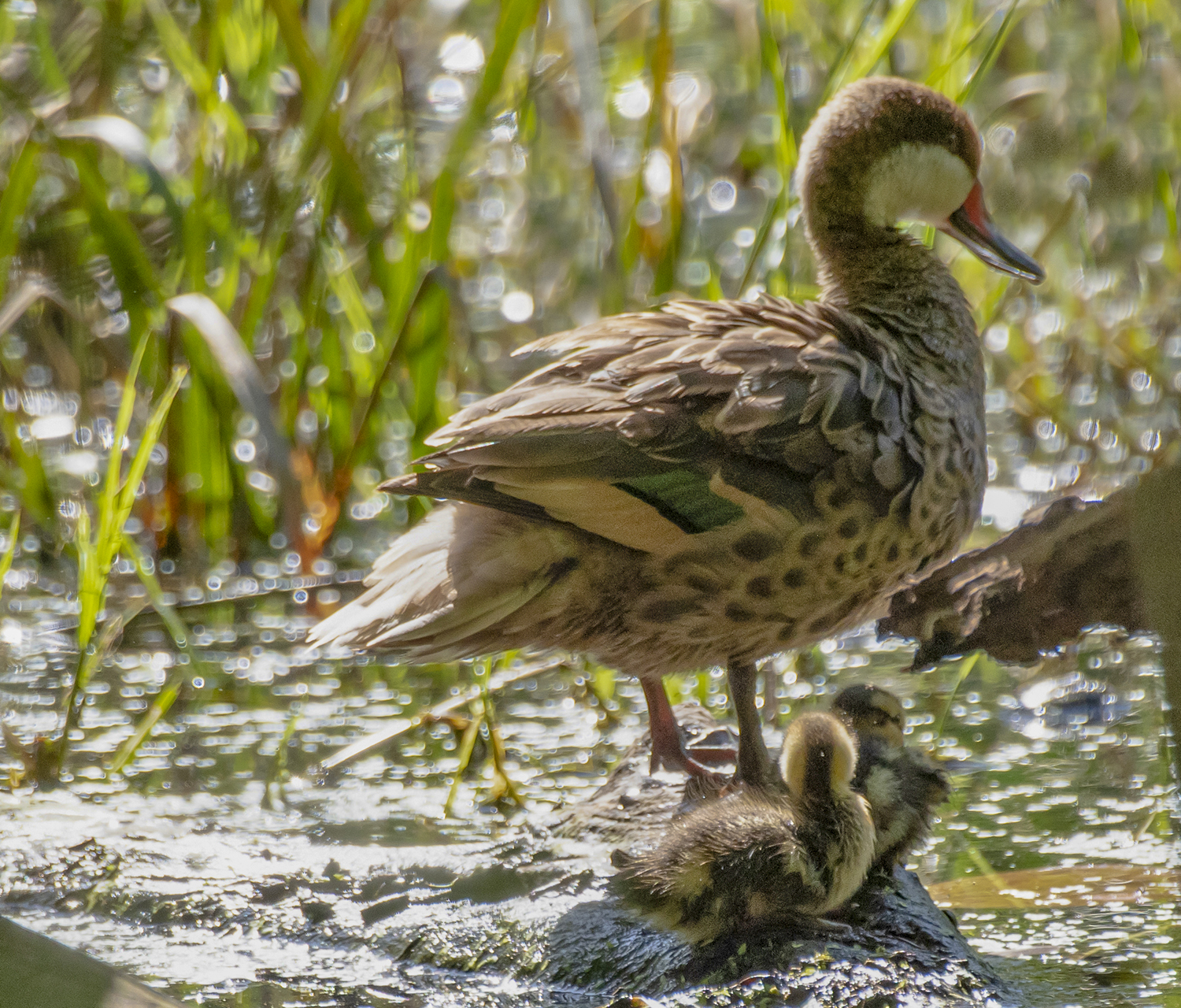
There were only 23 Great Egrets counted on St. John, but they are generally much more noticeable because they frequently come out and hunt for lizards along the roadsides. Mangrove Cuckoos mostly remain hidden in the wetlands and are still scarcer than before the hurricanes. They can sometimes be heard in the wetlands making their distinctive drawn-out song (dat dat dat dat dat dat dat), which is somewhat similar to the vocalizations of the also secretive Clapper Rails (kek, kek, kek, kek, kek, kek), though not nearly as loud.
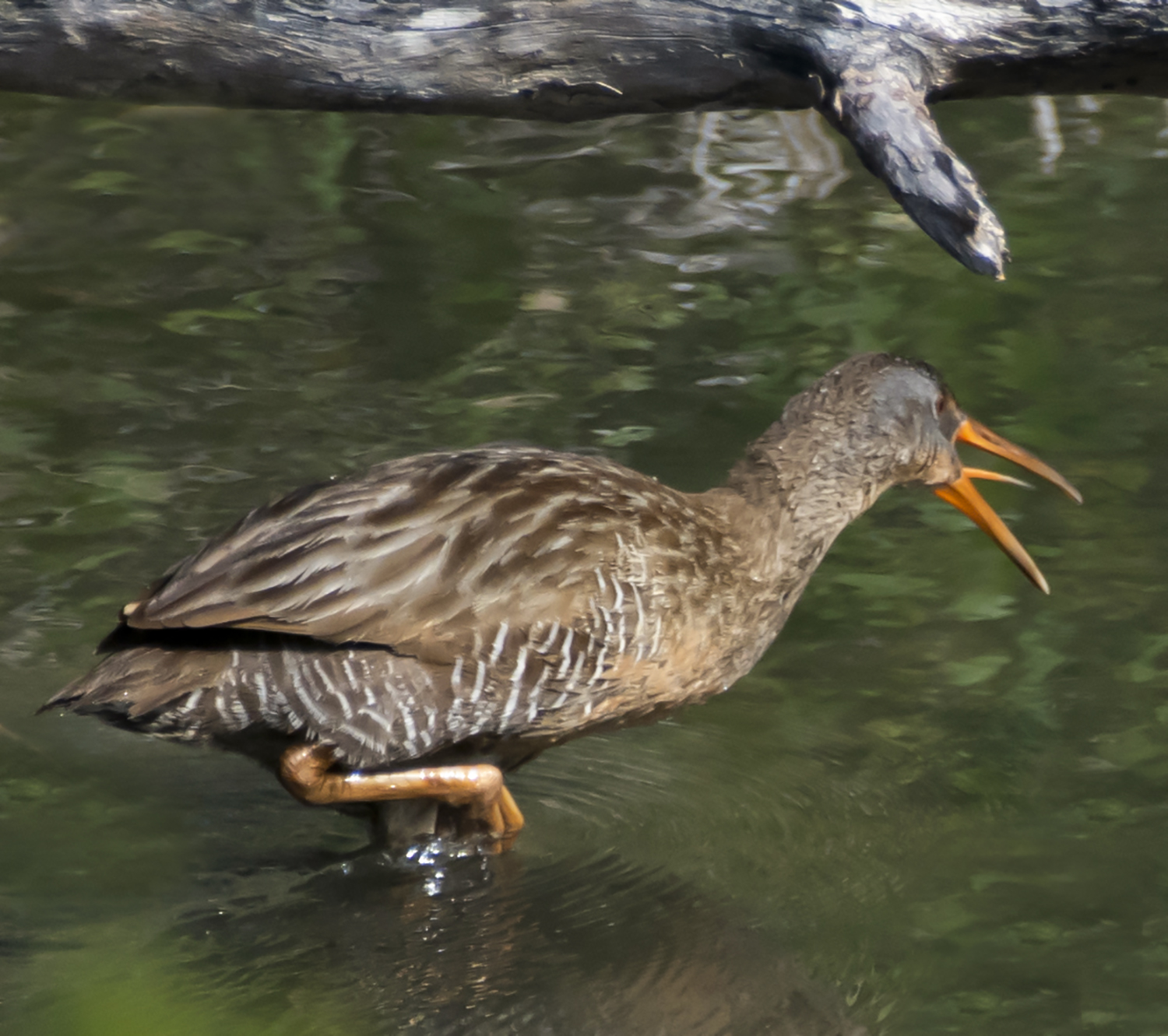
At the beaches, you can see Brown Pelicans out fishing (87 counted) along with the larger, soaring Magnificent Frigatebirds (32). It is particularly fun to be in the water and have a Brown Booby fly by low over the surface looking for a fish for dinner.
Migrating warblers that come for the winter are very difficult to spot unless you know what to look for and are willing to dedicate some time to sitting patiently in a wooded area. This time there were new records set for American Redstarts (23) and Ovenbirds (5), plus reports of a few Prairie Warblers, Black-and-white Warblers, Northern Waterthrushes, and a Palm Warbler.
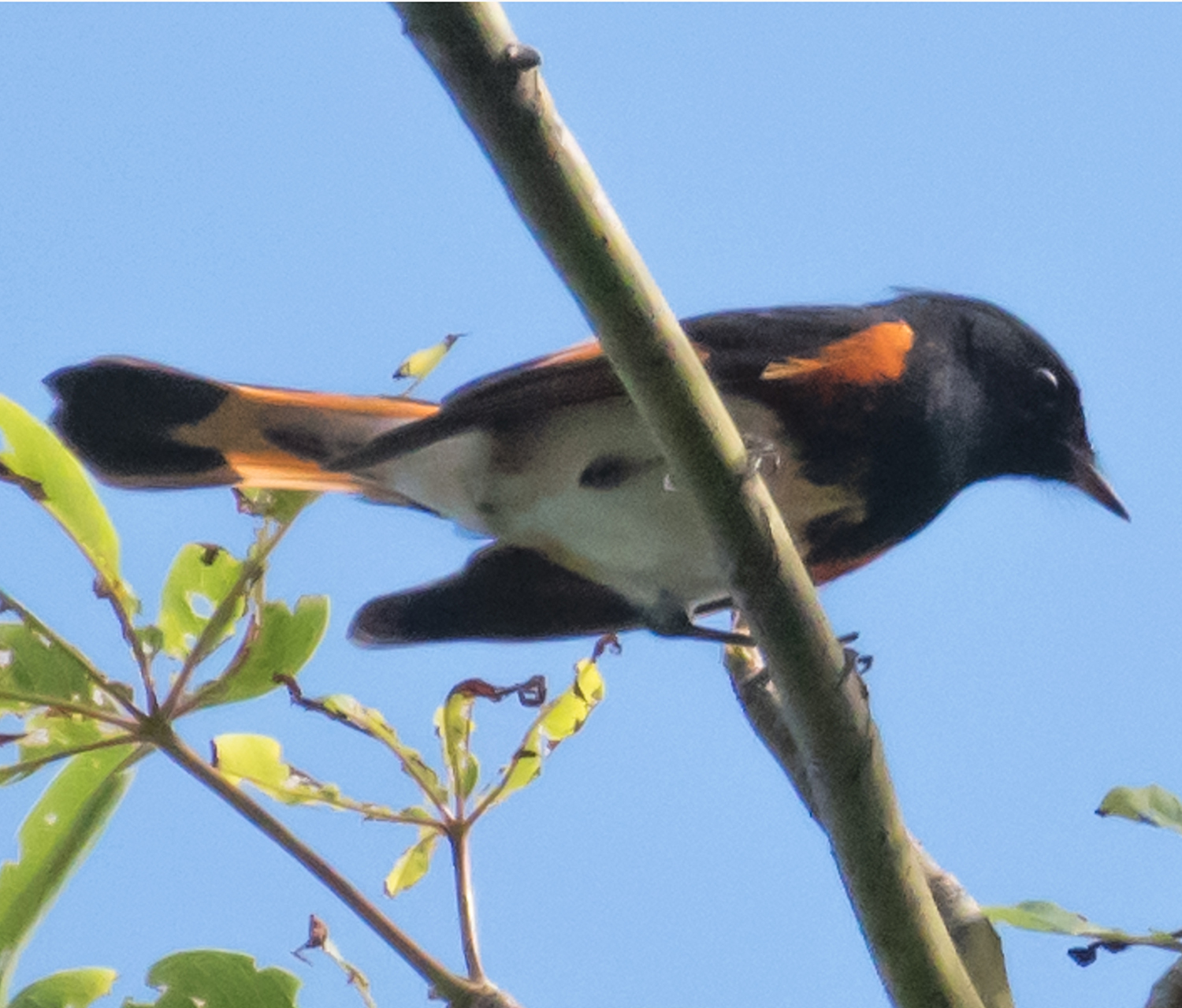
There were no lingering Laughing Gulls this time. For the past couple of years there were a few that stayed late into the winter, but that was unusual. They are mostly around St. John in the summer, when they come to breed on the offshore cays and cause a noisy ruckus as they go fishing along the popular beaches.
Sadly, there were also no American Flamingos seen on St. John this time. There was one recorded in the last bird count, and about 16 others appeared in south shore ponds later in the winter, most likely having come over from the British Virgin Islands. We are hoping that one day a group of them will come back to St. John and decide to stay.
We did have a couple of sightings of rare migrant birds. A Whimbrel (a large shore bird with a curved bill) was spotted out past Coral Bay — a first for the Christmas bird count. And two Indigo Buntings (small finches) showed up at Francis Bay. The males are bright blue during mating season in the spring up north, but are mostly brown in the winter, with just a few tell-tale blue feathers.
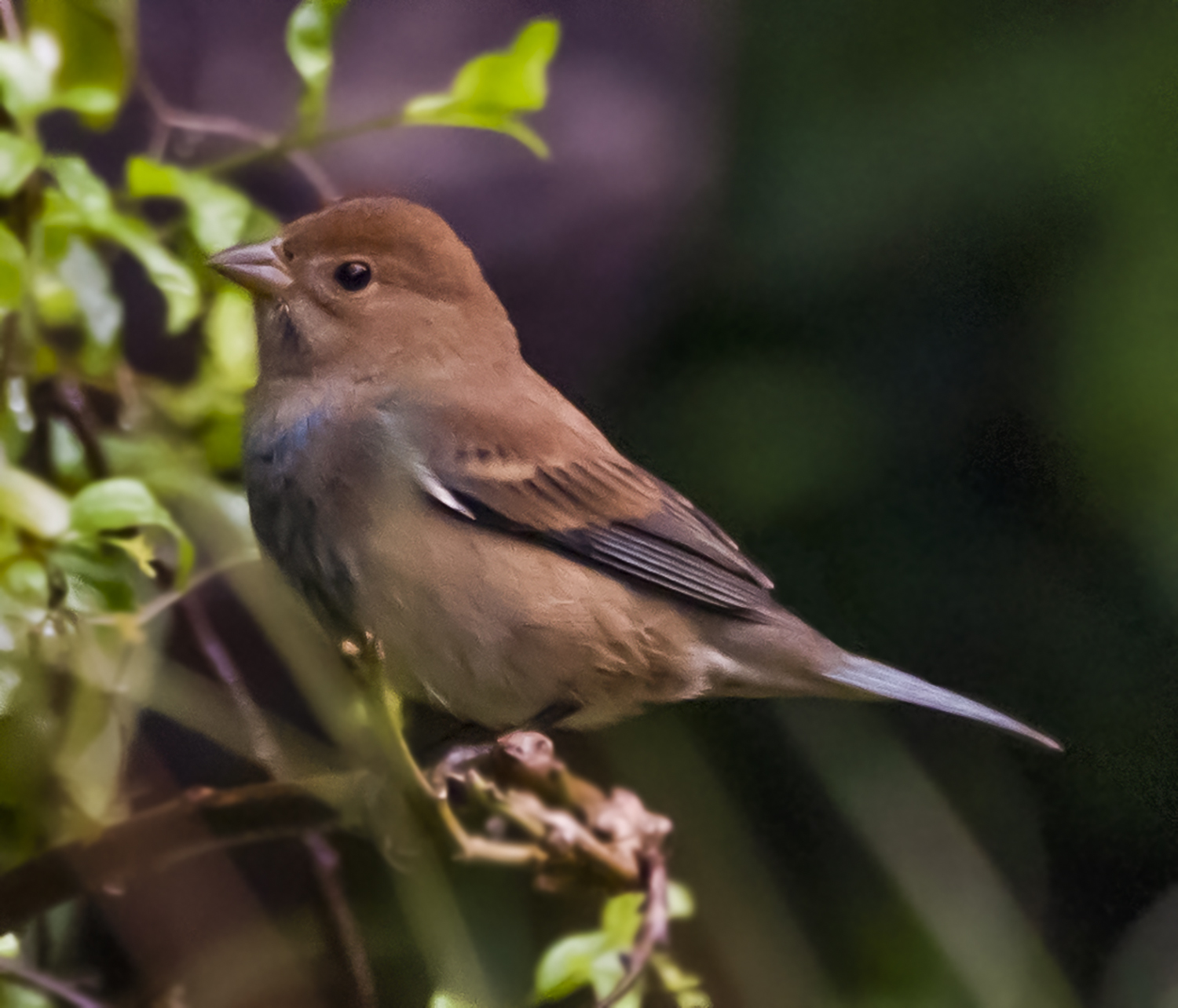
In order to record a Scarlet Ibis for the count, I had to make a special scouting effort around the Fish Bay wetlands. A few weeks earlier my neighbor had said he saw two of them fly up at the same time, and I was hoping to spot a pair. Other neighbors with a view over the pond showed me photos from last summer when there were clearly two red ones there, and another paler one that looked like a juvenile. Maybe a mating pair and a baby? Too bad I was away over the summer and couldn’t document it.
When I did spot one Scarlet Ibis to include in the count, it was not with a mate, but instead walking around with a Snowy Egret. I couldn’t help assuming they were the same two birds that have been keeping company consistently for the past few winters. Where are the other Scarlet Ibises?
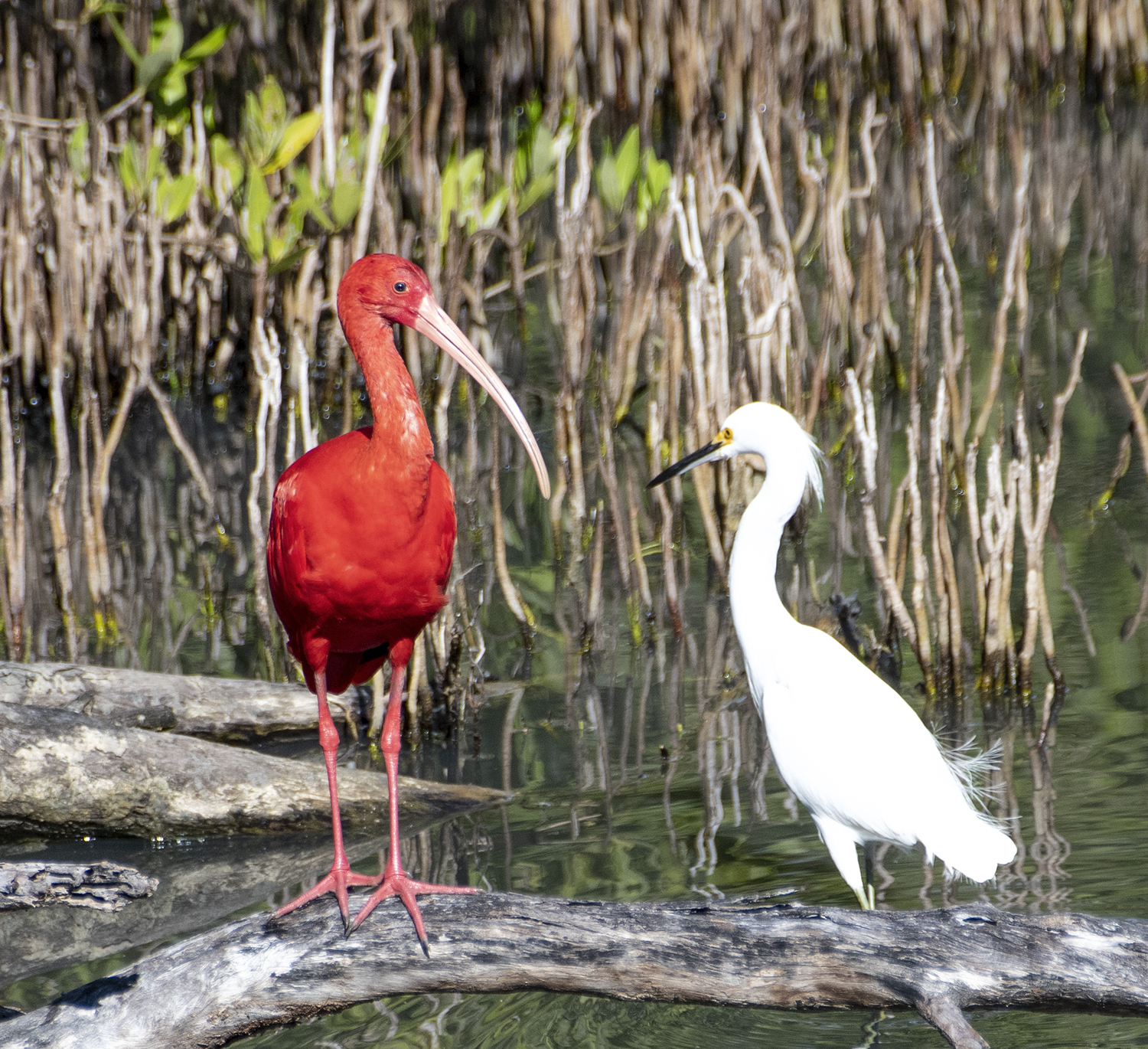
In my neighborhood, discussion about the Scarlet Ibis drama has definitely brought people together. And so has participating in the annual bird count.
When we look closely at the birds and other wildlife around us, we are more likely to want to also look out for them, to wonder about how they experience the places we inhabit, and to deepen our connections with life force we all share. We might even feel a bit more grounded in the world as we approach the challenges of the new year coming.
One member of the St. John count team, Beverly Melius, is also a poet and sent me this poem to share:
if birds are we are
what is it about counting birds? Perhaps
it’s about turning busyness to patience
unwording ourselves, becoming birdlike
growing wings, lifting from heaviness
taking flight into the unknown or maybe
it’s about hope that we can sidestep our
vanishing because they say we are in the
throes of the 6th Extinction, maybe it all
comes down to a lucky number but what
about the two rainbows weaving among
those feral storm clouds, maybe it’s about
peace descending with the first sighting
of the day or that stillness when suddenly
something new flies into your vision or nine
joyful Pelicans swooping in the surf, or the
moment a fleeting sliver of sunlight sends six
Pintails sparking with iridescence as they
skim across the pond inches above the water
or maybe it’s the soft drizzle of rain on
bare skin while bewitched by Grebes
and Grassquits, quite possibly though it’s
about huddling in a thicket taking cover
from the downpour and being mesmerized
by a Great Blue gripping the tip of a snag
twisting her long neck to see what the
Christmas winds are kicking up, turning back
then hunkering down into herself
waiting and watching together
— Beverly Melius, Christmas Bird Count 12-16-23
Gail Karlsson is an environmental lawyer, writer and photographer. She is the author of two books about the Virgin Islands – The Wild Life in an Island House, and the guide book Learning About Trees and Plants – A Project of the Unitarian Universalist Fellowship of St. John. She has also recently published A Birds’ Guide to The Battery and New York Harbor. Follow her on Instagram @gailkarlsson and at gvkarlsson.blogspot.com.





